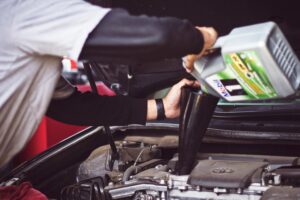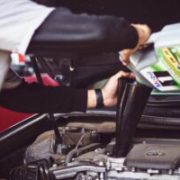Tips to Extend the Lifespan of Your Car
 When you purchase a car, it represents a significant investment. Some individuals keep their vehicles for more than a decade, while others opt for a trade-in after just a few years. Regardless of your timeframe, taking pride in your car and ensuring proper maintenance is essential to maximize its longevity. Here are five valuable tips to help you maintain your vehicle effectively.
When you purchase a car, it represents a significant investment. Some individuals keep their vehicles for more than a decade, while others opt for a trade-in after just a few years. Regardless of your timeframe, taking pride in your car and ensuring proper maintenance is essential to maximize its longevity. Here are five valuable tips to help you maintain your vehicle effectively.
Regular Car Washes
Keeping your car clean not only enhances its appearance but also preserves its value. Contaminants such as dust, pollen, tree sap, bugs, bird droppings, and salt can damage your paint and finish. Additionally, heat, rain, and air pollution can negatively impact your vehicle’s longevity.
Wash your car immediately if it accumulates splattered bugs, bird droppings, or tree sap. If you have a long weekly commute or your car is exposed to dirt, pollen, gravel, or air pollutants, consider washing it weekly. Otherwise, washing your car 1-2 times a month should suffice, especially if you live in mild weather conditions or keep your car in a closed garage.
Maintain Adequate Fuel Levels
Ensure your gas tank is not allowed to run too low. Running your car with a nearly empty tank can cause the fuel pump to work harder and generate excess heat due to air being sucked in. This could lead to premature wear or failure of the fuel pump motor. Don’t solely rely on your car’s mileage estimate; fill up your tank when it reaches around one-quarter full.
Regularly Replace the Air Filter
Replace your car’s air filter annually or every 20,000 miles. This inexpensive maintenance task offers benefits such as improved fuel efficiency, reduced emissions, and prolonged engine life.
Monitor Fluid Levels
Fluids play a critical role in your engine’s performance and overall car health. While some fluid checks are best left to professionals, there are a few you can perform yourself on a monthly basis. Check your windshield wiper fluid level and top it up if it falls below the recommended line. Additionally, regularly check your oil level using the dipstick. If it’s below the designated line, add more oil as needed.
Replace the Fuel Filter
The fuel filter prevents particles, debris, and impurities from reaching your engine, ensuring only clean gasoline flows through. Over time, the filter can become clogged, so it’s essential to replace it according to your vehicle manufacturer’s recommendations.
Consult your owner’s manual for the recommended timeline, or seek assistance from an expert if you’re not familiar with the process.
While we can’t assist with maintaining your vehicle, we can help you find excellent rates on your auto insurance. Contact us for a new insurance quote or an auto insurance review.



 As spring arrives, the gardening enthusiasts among us eagerly anticipate the joys of tending to our gardens. Not only does cultivating your own garden save money on groceries, but it also provides the satisfaction of nurturing and growing your own food. It’s even more enjoyable when you can involve your children and impart some of your favorite gardening tricks to them.
As spring arrives, the gardening enthusiasts among us eagerly anticipate the joys of tending to our gardens. Not only does cultivating your own garden save money on groceries, but it also provides the satisfaction of nurturing and growing your own food. It’s even more enjoyable when you can involve your children and impart some of your favorite gardening tricks to them.
 Embarking on a home remodel or landscape project is an exciting endeavor. Most people begin by envisioning their desired outcome and then reach out to multiple companies to obtain competitive quotes for the job.
Embarking on a home remodel or landscape project is an exciting endeavor. Most people begin by envisioning their desired outcome and then reach out to multiple companies to obtain competitive quotes for the job.